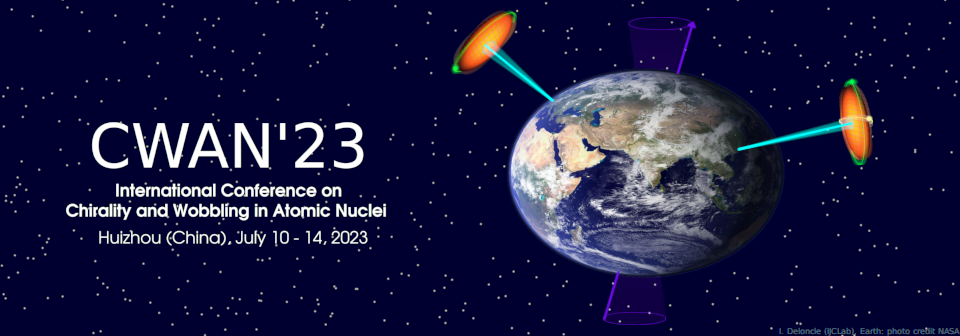Orateur
Description
Absolute values of EM transition probabilities in partner bands provide a stringent test of nuclear chirality. I discuss eight nuclei, $^{128}$Cs, $^{126}$Cs, $^{124}$Cs, $^{130}$Cs, $^{135}$Nd, $^{76}$Br, $^{80}$Br and $^{194}$Tl, for which such data were obtained through lifetime measurements using the Doppler Shift Attenuation Method. Analysis of the DSAM data was performed with the software developed by Alexandr A. Pasternak: COMPA, GAMMA, SHAPE (4 cases) and/or with the LINESHAPE program (5 cases). Important part of the DSAM analysis is information on a stopping power of studied nuclei. In the case of $^{128}$Cs, $^{126}$Cs, $^{124}$Cs the stopping power was specially measured by the semi-thick target method. For other was used the SRIM code of Ziegler or the the tables of Northcliffe and Schilling, corrected for shell effects.
One of important signatures of nuclear chirality, a special pattern of B(M1) staggering is expected when the so-called S symmetry is preserved, which requires, among others, that particle (proton) and hole (neutron) occupy the same level. Such situation occurs in $^{124,126,128,130}$Cs (j$_{11/2}$ level) and in $^{76,80}$Br (g$_{9/2}$ level). For $^{135}$Nd and $^{194}$Tl the partner bands are interpreted through many quasiparticle configurations (3qp and 4qp, respectively) and the S symmetry is not preserved. That is why there is no B(M1) staggering in these nuclei.

